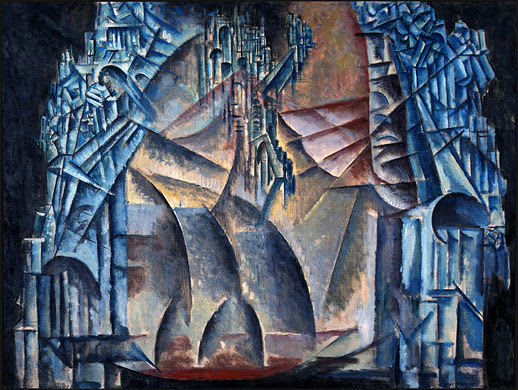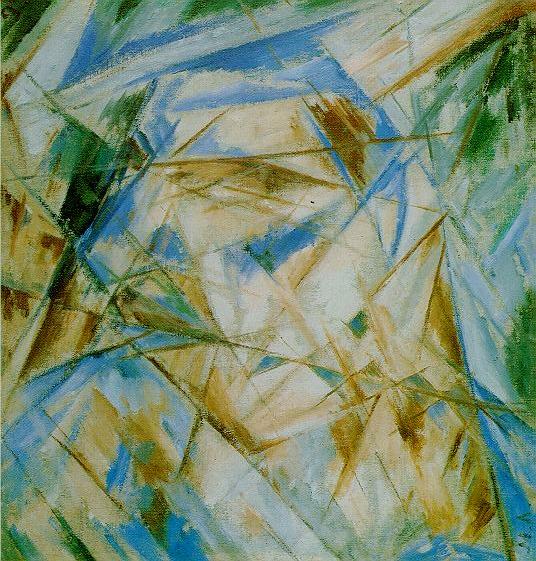 |  |
Interior of the Fourth Dimension | Portrait of a Fool |
Max Weber, 1913 | Mikhail Larionov, 1912 |
Max Weber was another artist who was interested in the fourth dimension -- he incorporated advanced ideas of the fourth dimension in his article Camera Work.
In plastic art, I believe, there is a fourth dimension which may be described as the conciousness of a great and overwhelming sense of space-magnitude in all directions at one time, and is brought into existence through the three known measurements.
About his work Interior of the Fourth Dimension, shown below, he wrote
The interior of the fourth dimension is the space around an art form which is stirred by the essence with which that form was vested by the artist.
 |  |
Interior of the Fourth Dimension | Portrait of a Fool |
Max Weber, 1913 | Mikhail Larionov, 1912 |
Like the cubists, many Russian painters sought to create a spatial ambiguity that would destroy any clear sense of their subjects' three-dimensionality. However, they didn't have the geometry of Jouffret or theory of Poincaré providing justification. Instead, Russian Cubo-Futurism, with its dependence on hyperspace philosophy (as opposed to mathematics) relied primarily on the idea of destroying perspective by trying to see objects from all sides at once.
Back to the Fourth Dimension and Non-Euclidean Geometry | Back to InClass